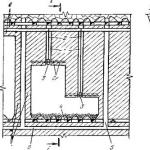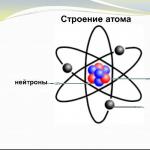What is a gas analyzer? How to use a gas analyzer? How to choose a gas analyzer? Gas analyzer review. Which gas analyzer is better?
A gas analyzer is a measuring device for determining the qualitative and quantitative composition of gas mixtures. There are manual and automatic gas analyzers. Among the former, the most common are absorption gas analyzers in which the components of a gas mixture are sequentially absorbed by various reagents. Automatic gas analyzers continuously measure any physical or physico-chemical characteristic of a gas mixture or its individual components. Based on their operating principle, automatic gas analyzers can be divided into 3 groups:
Instruments based on physical methods of analysis, including auxiliary chemical reactions. With the help of such gas analyzers, called volumetric manometric or chemical, they determine the change in the volume or pressure of the gas mixture as a result of chemical reactions its individual components.
Instruments based on physical methods of analysis, including auxiliary physical and chemical processes (thermochemical, electrochemical, photocolorimetric, chromatographic, etc.). Thermochemical, measurement-based thermal effect reactions of catalytic oxidation (combustion) of gas are used mainly to determine the concentrations of flammable gases (for example, dangerous concentrations of carbon monoxide in the air). Electrochemical ones make it possible to determine the concentration of gas in a mixture by the value of the electrical conductivity of the solution that has absorbed this gas. Photocolorimetric methods, based on the change in color of certain substances during their reaction with the analyzed component of the gas mixture, are used mainly for measuring microconcentrations of toxic impurities in gas mixtures - hydrogen sulfide, nitrogen oxides, etc. Chromatographic methods are most widely used for the analysis of mixtures of gaseous hydrocarbons.
Instruments based on purely physical methods of analysis (thermoconductometric, densimetric, magnetic, optical, etc.). Thermoconductometry, based on measuring the thermal conductivity of gases, allows you to analyze two-component mixtures (or multicomponent mixtures, provided that the concentration of only one component changes). With the help of densimetric gas analyzers, based on measuring the density of the gas mixture, the content of carbon dioxide, the density of which is 1.5 times higher than the density clean air. Magnetic gas analyzers are used mainly to determine the concentration of oxygen, which has high magnetic susceptibility. Optical gas analyzers are based on measuring the optical density, absorption spectra or emission spectra of a gas mixture. Using ultraviolet gas analyzers, the content of halogens, mercury vapor, and some organic compounds in gas mixtures is determined.
At the moment, the most common devices are from the last two groups, namely electrochemical and optical gas analyzers. Such devices are capable of monitoring gas concentrations in real time. All gas analysis instruments can also be classified:
By functionality (indicators, leak detectors, alarms, gas analyzers);
By design(stationary, portable, portable);
By the number of measured components (single-component and multi-component);
By the number of measurement channels (single-channel and multi-channel);
For its intended purpose (to ensure work safety, to control technological processes, to control industrial emissions, to control vehicle exhaust gases, for environmental control).
However, there are devices that, due to their unique design and software, are capable of analyzing several components of a gas mixture simultaneously in real time (multicomponent gas analyzers), while recording the received information into memory. Such gas analyzers are indispensable in industries where it is necessary to continuously obtain information on emissions or monitor technological process in real time. Analysis is also carried out for components that previously could only be determined by other methods (for example, the total concentration of hydrocarbons (in the Journal of Analytical Chemistry of the American Chemical Society), etc.) in corrosive gases and other aggressive environments. Such devices, depending on the design, are used both as continuous gas monitoring systems in industry and as portable devices for research or environmental monitoring. Modern high-class gas analyzers, in addition to reliability and ease of use, have many additional functions, For example:
Gas differential pressure measurement
Determination of speed and volumetric flow of gas flow
Determination of gas/gasoline consumption
Built-in memory
Wireless interface for data transfer to PC
Statistical processing of results
Calculation of mass release of pollutants
Application of gas analyzers
Ecology and conservation environment: determination of concentration harmful substances in the air;
In motor control systems internal combustion lambda probe) and regulation of combustion of boilers of thermal power plants;
In chemically hazardous industries;
When determining leaks in refrigeration equipment(so-called freon leak detectors);
When determining leaks in gas and vacuum equipment (helium leak detectors are usually used);
In explosive and fire hazardous industries to determine the content of flammable gases as a percentage of LEL;
In diving to determine the composition of the gas mixture in diving cylinders;
In basements, wells, pits before hot work.
In medicine, “multigas” provides control over gas concentrations in the breathing circuit during anesthesia.
what is a gas analyzer, a device for finding gas leaks, how to choose a gas analyzer, why do you need a gas detector?, promotion for a gas analyzer, sale of a gas analyzer, buy a gas analyzer at a low price, gas analyzer-analyzer, industrial gas analyzer, buy a household gas analyzer, analyzer flue gases What is this? why is it needed? how to use? which is better? how to choose an analyzer, why the dough is better than, verification of a gas analyzer, certificate for a gas analyzer, instructions for a gas analyzer, gas analyzer for detecting gas leaks, finding gas leaks, how to find a gas leak, device for finding gas leaks
The gas analysis procedure is needed in various fields, where you need to know about the composition and characteristics of flammable air mixtures. It is carried out at home to detect leaks. The medium can be not only a household gas pipeline, but also an air conditioning system with freon, a boiler installation. The household gas analyzer exists in various versions. They have different operating principles, control systems, and characteristics. For the safety of your home, you must have such a device.
Features of devices
The device has specific characteristics, because it is intended for a special branch of security - gas leak detection. Among the variety of devices there are equipment with different functions. The household gas analyzer has small parameters, modest performance indicators and simple controls. If professional devices are used stationary, then household devices can move. The main function of a gas analyzer is to search for leaks when studying gas vapors.
Home appliances have different functions. For example, an inexpensive household gas analyzer has a simple warning system. This function can appear in the form of light or sound indication. If the concentration of gas vapors in the apartment is increased, the device will give a signal. Complex devices have displays that indicate detailed information. Thanks to them, convenient control is provided.
Types of detectors
A household gas analyzer can be manual or automatic, which determines the ease of operation. In the first case, the device is presented in the form of an absorption apparatus, which operates on the principle of absorption of gas vapors by reagents. Such devices are inexpensive and easy to use. They are showing average level accuracy of analysis.

Automatic devices have a variety of capabilities. They can function continuously, monitoring the parameters of the mixture and its individual components. The basis includes physical analysis, chemical reactions or physico-chemical process. Parameters such as pressure, volume of the mixture, and concentration of oxides are set in the automatic detector.
There is a portable gas analyzer that has small parameters. It is convenient to use and easy to configure. Any types of leaks will be immediately noticeable. The portable gas analyzer is ideal for all premises. Its functions do not differ from the standard device.
Installation Features
A household gas analyzer can be stationary, so it must be installed. It has compact dimensions, convenient maintenance and low performance. Install such a device in an area of high risk of gas leakage. This could be a place with a boiler installation, a stove or a boiler.

Mounting occurs on the wall so that users have access to the controls. Fixation is carried out using the fastening profile included in the kit. You need to install the supporting panel with screws or self-tapping screws, and then the device itself is attached. Sometimes a power cable is required, but many low-power devices operate on batteries. There are different household gas analyzers for apartments with gas stoves. Each of them has its own characteristics. Before using the device, you must familiarize yourself with the operating instructions. There is an instruction manual for this device.
Subtleties of operation
You need to start working by determining the mixtures with which the device will work. Many instruments can operate with sensing elements to monitor different mixtures. The main setting is to determine the gas concentration level.
Device diagnostics is of great importance. Instruments must be checked every six months. The procedure consists of examining the gas analyzer and testing its performance. They must be monitored to determine the error of the values.
The check is carried out by switching the device to a special mode, after which the sensors do their work. Then the readings are compared with the norm. Calibration may be required and is performed automatically.
Foreign manufacturers

There is a household gas analyzer with a gas supply shutoff device, which is very convenient to use compared to standard devices. The devices are produced by specialized companies. The best of them are:
- Rothenberger;
- Testo;
- Mastech.
Russian manufacturers. Prices
On Russian market Megeon brand devices are popular. Detectors also differ in cost, which is determined different characteristics. A regular one with a small set of functions costs about 2-3 thousand rubles. If there is a display, then the device costs between 5-7 thousand rubles. Multifunctional devices have a price tag of 15-20 thousand rubles.
When choosing a device, it is necessary to take into account the type of gases being studied. The devices can work with, for example, butane, natural gas. The detector can only be configured for one substance. It must be fit for purpose - leak detection and exhaust analysis.

It is important to pay attention to the temperature range. If you work outdoors, you should choose a device that can withstand temperatures down to -20 degrees. Gas analyzers for boiler houses, laboratories and production are now sold.
Detectors that can be used to detect gas leaks are quality safety systems. In conventional signaling circuits, these devices are included in the control center. It turns out that the device can automatically adjust to different conditions. In a separate mode, detectors can be programmed. But in the complex, security systems work more extensively, since the controller manages the parameters of the analyzer using many different sensors and sensors.
Inspection of premises to identify critical indicators of the gas mixture is an important condition ensuring safety at the site. We can talk about production areas, and about rooms in apartments and private houses where gas communications are used. The simplest tool such an examination is a household gas analyzer, which, depending on the version, can also act as a warning device. The device may have different performance characteristics, which should be taken into account when choosing.
How does a gas analyzer work?
Almost all models of such devices contain a converter (detector), a measuring module and a power supply. As for the converter, it can be functionally represented as a sensitive element, which determines the presence of certain components of the mixture under study by sending the corresponding signal. This sensor can work differently depending on the principle of fixation of chemicals.
In turn, signal processing is carried out by the measuring module. With its help, household gas analyzers for apartments not only register the presence of a certain concentration of a particular component, but also reflect specific values on the display. Anyway modern models devices make it possible to display several parameters of the mixture.
To maintain autonomous and constant operation, the design of the device includes the above-mentioned power supply. This can be either a compartment with AAA batteries or a battery. The main thing is that it allows you to use the gas analyzer even where there is no access to an outlet. There are also stationary network models for 220 V.
Types of device

Models of gas detectors are distinguished by many characteristics - from the method of placement to the form factor and the degree of autonomy. But the fundamental and most important classification is based on the principle of operation of the sensor. Based on this feature, the following types of household gas analyzers can be distinguished:
- Thermochemical. IN in this case The thermal radiation of a chemical reaction involving the target component of the gas mixture is measured. The most commonly studied oxidation process is with air catalysts.
- Magnetic. Such models are mainly focused on identifying oxygen and determining its concentration. The operating principle of the sensor is based on the dependence of the magnetic response on the level of oxygen content in the gas mixture. Varieties of the device include magnetomechanical and thermomechanical devices.
- Infrared. During operation, individual particles of gas vapor absorb IR radiation. Depending on the wavelength and optical design, the analyzer can provide point concentration determination at the molecular level different types components consisting of several atoms.
Reviews of Testo models

In terms of functionality, accuracy and reliability, this is the most attractive line of gas analyzers. Testo products are highly valued by both professionals and ordinary users who use devices in the kitchen, boiler room or other rooms where there is a risk of increasing the concentration of harmful substances. For home needs, you can purchase a household gas analyzer in modification 310. The owners of this device specifically emphasize the presence of a powerful battery, advanced communication capabilities (including connection to a printer for printing data), a large display and the ability to automatically register parameters. The design of the device also allows it to be installed directly in a chimney or gas pipeline, monitoring pressure indicators in the circuit.
Reviews of the CEM GD-3300 model
The manufacturer CEM is a direct competitor of Testo in the measuring instruments segment. But in this case, it is appropriate to consider an entry-level gas analyzer. The GD-3300 model is primarily attractive due to its low price tag of 3.5-4 thousand rubles. In terms of accuracy, it is slightly inferior to the above-mentioned version, and in terms of versatility, it is one of the best options in your class. As the owners note, the device works effectively both with natural gas and with the determination of mixtures of butane, propane, ammonia, alcohol vapor, etc. The owners also positively characterize the functionality of the model. If you organize a connection with a control relay in the circuit, you will get a full-fledged household gas analyzer with a device for shutting off the mixture supply. After detecting a leak, the device activates visual and noise alarms, simultaneously sending a command to the equipment control unit.

Reviews of the model from Rothenberger
Also a well-known manufacturer of measuring devices focused on leak detection and subsequent signaling. One of the basic modifications of the family is R087305. This is an electronic device that is used in thermal circulation systems of mixtures, in air conditioners and cooling circuits. The advantages of a gas analyzer domestic gas from Rothenberger include high energy efficiency and ease of use. For example, a 2.4 V battery pack allows you to use the device for 50 hours. As for the disadvantages, many emphasize the narrow specialization of the device and the impossibility of its use for entire groups of gaseous media.
Gas analysis is required in the most different areas, where it is important to have an idea of the composition and characteristics of flammable air mixtures. At home, gas analyzers, or detectors, are more often used to detect leaks. Moreover, the target environment can be not only a household gas pipeline. This could be an air conditioning system with freon, or a boiler installation with harmful emissions. A modern gas analyzer is available in different versions, which differ in operating principle, control system, performance characteristics and other parameters.
Features of household gas analyzers
Models for home use They are distinguished by their small size, modest performance indicators and simplified control. If professional devices require stationary operation, then household appliance provides the ability to move. Its functionality is designed to search for leaks and examine gas vapors in different points. At the same time, in the segment of home devices there are different levels functional content. For example, a household gas analyzer from the budget category works with the simplest system notification, which can be represented by light or sound indication. That is, if in the apartment there is an excess of the concentration of gas vapors relative to the standard value, the detector will give a corresponding signal, but without additional information. More complex household models are equipped with a display that displays data from detailed characteristics environment under study.
Types of detector

Home gas analyzers are available in manual and automatic versions. In the first case, it is a simple absorption apparatus, the operating principle of which is based on the process of absorption of gas vapors by reagents. These are inexpensive and at the same time accessible devices that demonstrate an average level of analysis accuracy. Automatic models are characterized by broader capabilities for studying target environments. In particular, a gas analyzer of this type can continuously monitor certain parameters mixture or its individual component. As for the operating principle, it may be based on the principle of physical analysis, chemical reactions or physical and chemical process. Using an automatic detector, the user determines indicators such as pressure and volume of the mixture, concentration of oxides, etc.
Installation of gas analyzers
In families of household analyzers there are also stationary models that require special installation. At the same time, they are also distinguished by their compact size, ease of maintenance and low performance characteristics. Installation of such a device is usually carried out in a place increased danger gas leak. This could be an area next to a boiler or stove. Mounting is most often carried out on the wall in such a way that the user has direct access to the control panel of the device. The gas analyzer is fixed using a mounting profile, which usually comes in the basic kit. Using screws or self-tapping screws, it is necessary to install the supporting panel, and then integrate the device itself into it. Depending on the type of model, it may also be necessary to lay a power cable from the mains, although household low-power analyzers often operate on rechargeable batteries.
Nuances of operation

Work begins with determining the mixtures for which the device will be oriented. Modern devices allow you to configure sensitive elements for tracking different parameters mixtures. The main setting relates to determining the upper and lower gas concentration levels. Special attention During operation, attention should be paid to diagnosing the device. Approximately every six months, gas analyzers are calibrated, which consists of a comprehensive examination of the device and testing of its performance qualities. It is mandatory to evaluate which factors determine the error of the obtained values. Typically, verification is performed by switching the device to the appropriate mode, after which the test mixtures are analyzed by sensors. Next, the obtained indicators are compared with the standard ones. Depending on the error data obtained, calibration may be required, which is most often carried out automatically.
Manufacturers and prices

Gas analyzers are not widely used metrological devices, so their development and production are mainly carried out by specialized companies. The best of them include Rothenberger, CEM, Testo and Mastech. Decent quality models from the MEGEON line are popular in the Russian segment. Detectors differ significantly in price - it depends on many parameters. A simple gas analyzer for home with minimum set functions can cost about 2-3 thousand rubles. Medium-sized devices with a display are already estimated at 5-7 thousand. Multifunctional indicators with high-tech sensors can cost 15-20 thousand.
Conclusion

Detectors that are used to detect leaks and spills in residential buildings, are increasingly considered as components of systems integrated security. In classic signaling schemes, such devices are introduced into a single electrical control point with the ability to program functions. This means that the gas analyzer can automatically adapt to work in specific conditions. It can be said that even in a separate operating mode, a modern automatic detector allows programming. But these capabilities are expanded, since the controller controls the parameters of the analyzer, guided by data from many other sensors and sensors.
INSTALLATION OF THE DEVICE DOES NOT REQUIRE REPLACEMENT OF GAS VALVES OR SHUT OFF THE MAIN. WILL BE PUT ON ANY TAP.
All units of the device are mounted separately and connected to each other by wires, according to the electrical diagram.
The power supply is mounted using fasteners near electrical outlet(220V.) according to the rules of TB and PUE. The power supply has a power cable with a plug at the end, which is plugged into an outlet. The gas analyzer unit is mounted using a mount in a room where gas-using equipment is installed (gas stove, fireplace, gas boiler).
- Recommended distance from the gas stove is 1 m in any direction
- For a gas analyzer for liquefied gas, the recommended installation distance is 0.2 m. from the floor
- For gas analyzer on natural gas recommended distance 0.2m. from the ceiling
The actuator unit is mounted using fasteners directly on the gas pipeline in the place where the gas supply valve is installed. Installation is carried out in such a way that the lever of the actuator grips the crane handle, and the rotary axis of the lever visually coincides with the rotary axis of the crane.
A household electronic gas analyzer with a gas supply shut-off mechanism, when mounted and connected, operates as follows:
- When plugged into a 220V outlet. power supply cable, the LED on the power supply lights up, indicating that the device is in working condition
- When an increased gas concentration is detected on the gas analyzer unit, a sound alert occurs, the LED indicator lights up and a command is sent to the actuator
- When receiving a switching command, the actuator closes the gas supply valve by turning the lever
- The sound and light signal continues until the gas concentration reaches the norm, or until manual unlocking is performed
- The actuator is brought to its initial state (i.e., opening the gas supply valve) manually by pressing the button on the top of the actuator and turning the valve lever handle to the “open” position.
Supply voltage: ~220V,50Hz.
Power consumption: 10W
Temperature range from: -20 o C to +40 o C
Gas detection method: catalytic
Response time: 15 sec
LEK threshold (concentration): 20%
Light indication: LED
Sound indication: sound emitter 70 dB
The actuator lever force is 75 kg/cm²
Detectable gas: propane, butane, natural gas
Guaranteed period of continuous operation in standby mode: 12 months
Average time between failures of the actuator unit - 1000 shutdowns
Verification period: 7 years
Working period: 14 years
This device is not a source of ion radiation




